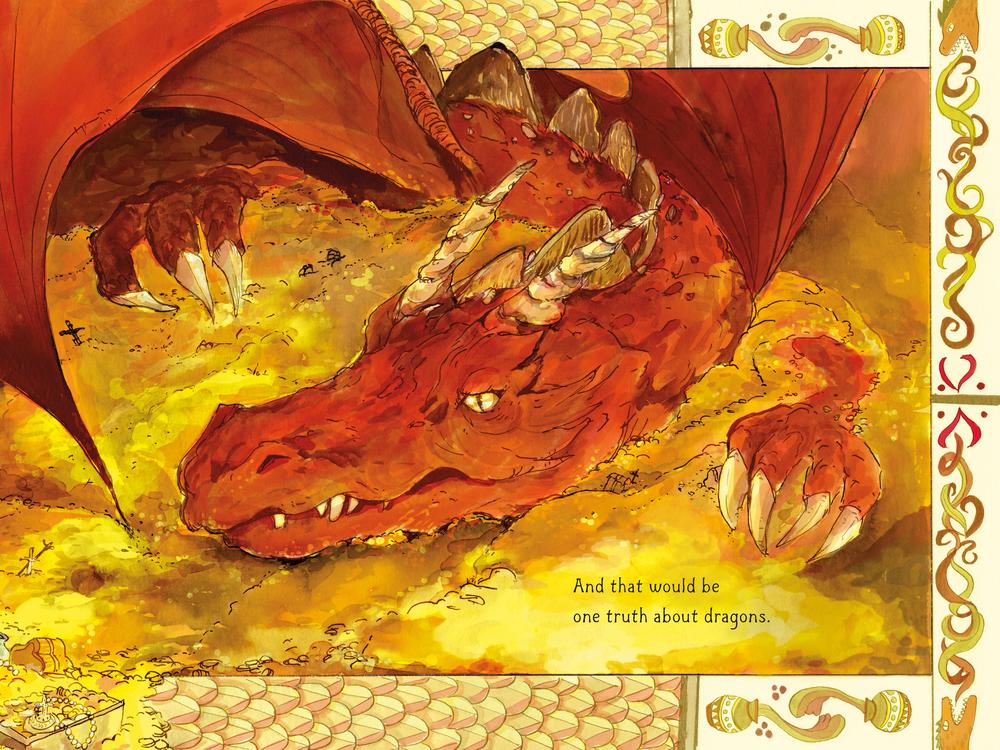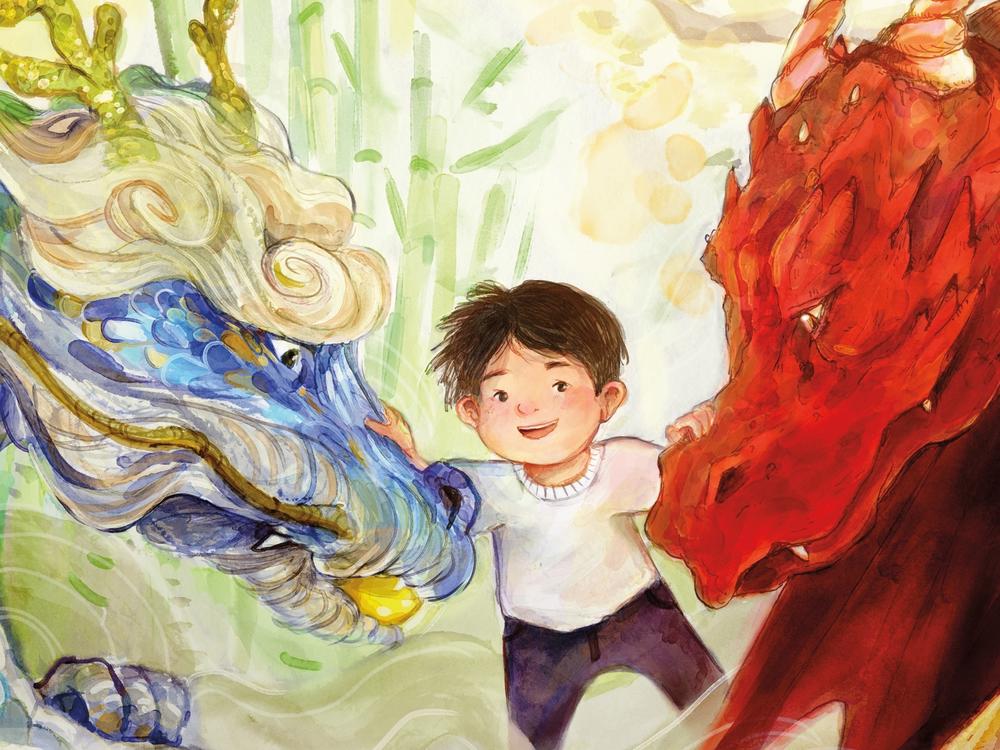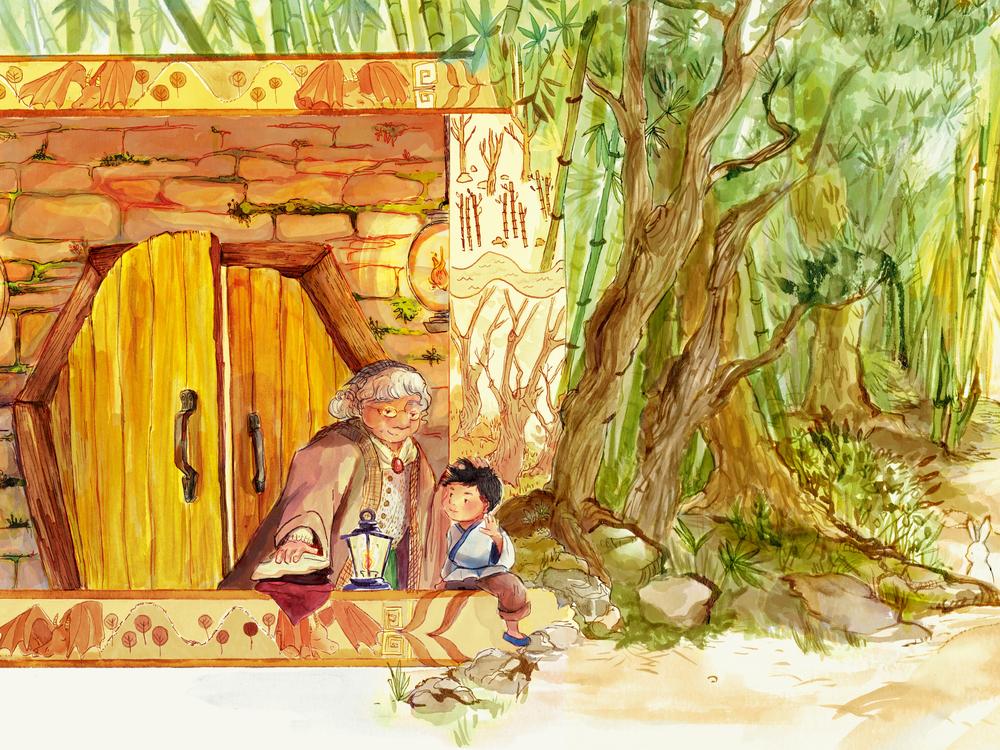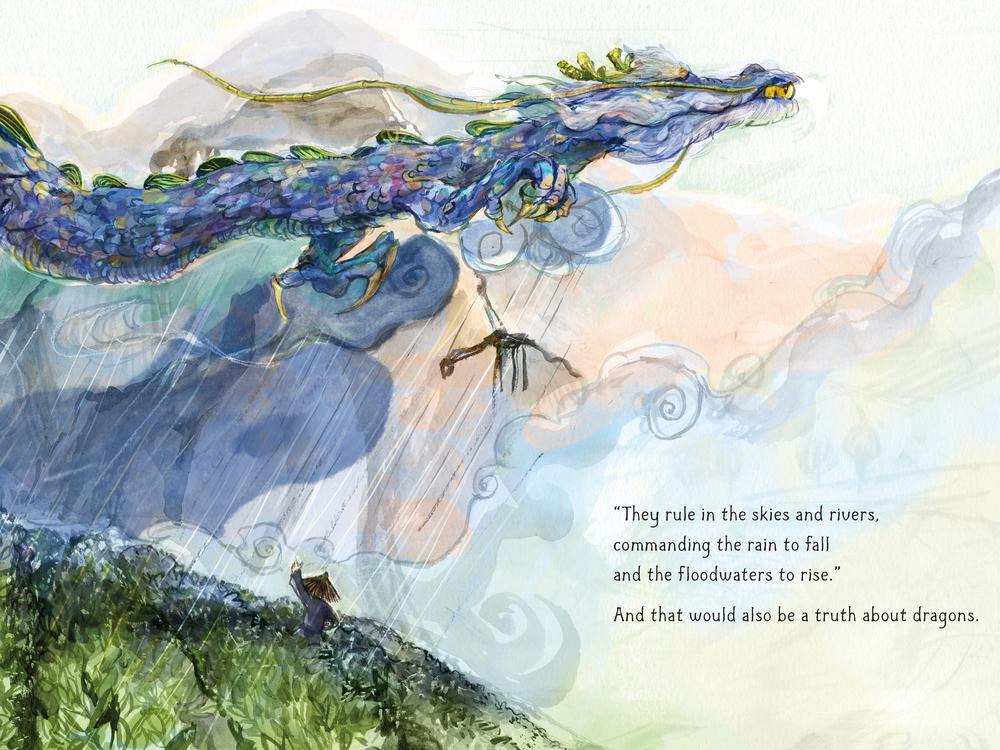Section Branding
Header Content
To learn 'The Truth About Dragons,' go on a quest through this kids' book
Primary Content
A little boy goes on a quest — into two very different forests — to discover the truth about dragons.
“You must put your favorite cloak around your shoulders and your sturdiest boots upon your feet,” Julie Leung writes in her Caldecott Honor children’s book, The Truth About Dragons.
“Leave on a day when the air is crisp as new paper, the wind is gentle, and the skies are clear.”
In the first forest, full of old, gnarled oak trees, the child evades mischievous hobgoblins, mossy bridges, glowing will-o’-the-wisps, and winding brooks before arriving at a yellow cottage in the middle of a boggy swamp.
There lives a wise woman who tells him the truth about dragons.
“Dragons are fearsome and fire-breathing, my child,” the wise woman says, “with wings like a bat’s and the body of a lizard. Piercing horns grace their reptilian heads.”
And that, for sure, is one truth about dragons. But our hero still has another journey to go on.
“The book was inspired by my firstborn son,” explains Julie Leung. “We had debated a lot about which last name to give him. My husband having a very common Americanized name that's synonymous with a soup company, and me having one that's always been traditionally a little harder to pronounce.”
Leung was grappling with the idea of her son growing up feeling like he needed to choose between cultures — his mom’s Chinese heritage or his father’s American heritage. So she turned to folklore.
“There's such different interpretations of the dragon mythology between Eastern and Western cultures,” Leung says, “it's a perfect metaphor.”
To depict the two mythologies, Hanna Cha illustrated the book in two completely different styles.
“I decided to use pen nibs for the first half of the book,” says Cha. “I got inspired by a lot of the older folktales and storybooks. And I loved how in those books they use borders to create a separate layer that adds to the story.”
In the first half of the book, the pages are lush and warm. A border of trees and leaves, flowers and mushrooms, frames each page. The wise woman’s cottage is full of rough-hewn wooden furniture and a stone hearth. Dried flowers hang from the ceiling, a cauldron bubbles away over a fire. “Her house smells of cedar chests, sugar cookies, and apple cider,” Leung writes.
Then, midway through the book, after the wise woman gives our hero one truth about dragons — basically that they’re all like Smaug from The Hobbit, sitting on piles of treasure and shooting flames at trespassers — the little boy steps over and out of the border of the first story, and straight into another.
Now the illustrations are airy and cool — greens and blues replace the warm reds and browns of yore. The borders have disappeared. The oak trees have been uprooted by a bamboo forest. The child is guided by nine-tailed foxes, ghostly maidens, and the white rabbit who dwells on the moon.
“For the second half I used sumi ink and calligraphy brushes,” explains Cha. “These brushes are beautiful brushes from Korean folk art. For me, I'm more comfortable doing brushes. That has been most of my work beforehand.”
Instead of a swampy cottage, the second wise woman lives in a palace overlooking a towering waterfall. It smells of jasmine and incense. She drinks chrysanthemum tea in a tiny porcelain bowl. And, of course, she knows another truth about dragons.
“Dragons are majestic creatures of air and fire,” Leung writes. “They rule in the skies and rivers, commanding the rain to fall and the floodwaters to rise.”
Hanna Cha says she gave careful consideration to how she’d draw the two dragons in this story differently. The fire-breathing Western dragon is deep red — on the page where you meet it, the border is made out of dented armor and bits of skeletons, evidence of its destructive powers. The god-like Eastern dragon is almost ethereal — it moves through the air like swirls of light blue liquid.
“I also really focused on a lot of the dynamic movements of how the dragons would move,” says Cha. “For the blue dragon, I imagined it kind of twisting and turning, serpent-like… this very majestic movement… And for the red dragon, I made sure to create this weight that is almost immovable, almost indestructible.”
Most people think they have to choose between the two dragons — red or blue, fearsome or holy, Eastern or Western mythologies. But at the end of his quest, our hero learns the real truth about dragons.
“I think a lot about the ways that we describe mixed or blended or half. There's a lot of terminology we use when we talk about kids who are coming from different cultural and racial backgrounds,” says author Julie Leung. “And I want the idea of my kid's future feeling like it is doubled, it is enriched, it is limitless.”
Or, as the omniscient narrator (actually his mother), tells the little boy, “Inside your heart is where the two forests meet. Both journeys are yours to take. Both worlds are yours to discover.”





